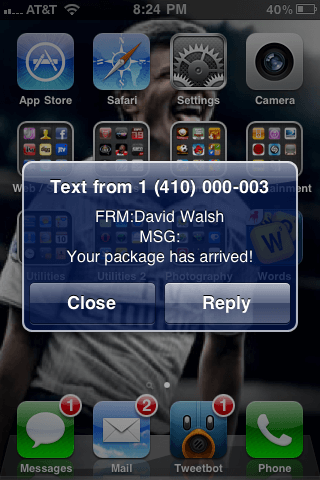Detecting Fonts Ready
Knowing when resources are loaded is a key part of building functional, elegant websites. We're used to using the DOMContentLoaded event (commonly referred to as "domready") but did you know there's an event that tells you when all fonts have loaded? Let's learn how to use document.fonts!
The document.fonts object features a ready property which is a Promise representing if fonts have been loaded:
// Await all fonts being loaded
await document.fonts.ready;
// Now do something! Maybe add a class to the body
document.body.classList.add('fonts-loaded');
Font files can be relatively large so you can never assume they've loaded quickly. One simply await from document.fonts.ready gives you the answer!
![Send Text Messages with PHP]()
Kids these days, I tell ya. All they care about is the technology. The video games. The bottled water. Oh, and the texting, always the texting. Back in my day, all we had was...OK, I had all of these things too. But I still don't get...
![Regular Expressions for the Rest of Us]()
Sooner or later you'll run across a regular expression. With their cryptic syntax, confusing documentation and massive learning curve, most developers settle for copying and pasting them from StackOverflow and hoping they work. But what if you could decode regular expressions and harness their power? In...
![MooTools onLoad SmoothScrolling]()
SmoothScroll is a fantastic MooTools plugin but smooth scrolling only occurs when the anchor is on the same page. Making SmoothScroll work across pages is as easy as a few extra line of MooTools and a querystring variable.
The MooTools / PHP
Of course, this is a...
![Using Opacity to Show Focus with jQuery]()
A few days back I debuted a sweet article that made use of MooTools JavaScript and opacity to show focus on a specified element. Here's how to accomplish that feat using jQuery.
The jQuery JavaScript
There you have it. Opacity is a very simple but effective...




